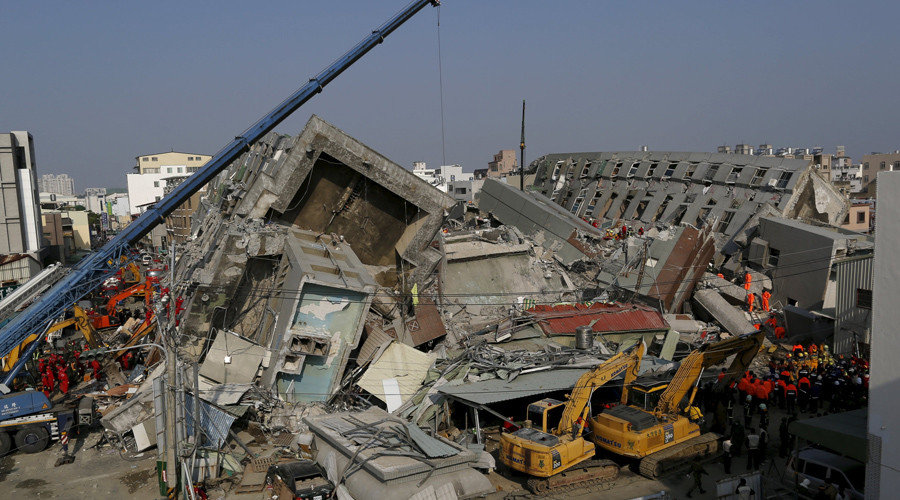
Witnesses at the scene have told Reuters that they saw large rectangular, commercial cans of cooking-oil packed inside the wall cavities of the 17-story Wei Guan Golden Dragon Building, apparently having been used as building material.
地震で崩壊する建物から毎回見つかる一斗缶で出来た柱...。これじゃ崩壊するのあたりまえ。。。 pic.twitter.com/ug7EfrNXfs
— _yasu (@yasuatai) February 6, 2016
A BBC correspondent reported from the scene that the collapse has exposed blue-and-white cooking oil cans that "appear to have been used as filler inside some of the concrete beams."
The authorities have already employed three teams of civil engineers and started investigation into the collapse of the two decade old building, Tainan Mayor William Lai said.
"When it's completed, we'll punish those who should be held accountable," he said.
Taiwán investiga aparición de latas en columnas de edificios derrumbados @chematierra https://t.co/xcTjRRlmU2 pic.twitter.com/fu0pLt2Z1C
— ffloresm (@ffloresm) February 7, 2016
As of Sunday evening the death toll from the 6.7-magnitude earthquake that hit Taiwan at the beginning of the Lunar New Year holiday stands at 33, with 31 of the dead having been found at the collapsed Wei-guan Golden Dragon Building in Tainan.
Cooking oil cans in reinforced pillar of building in Yongkang District exposed after earthquakePhoto: Taipei Times pic.twitter.com/Xw3Fw9750L
— Linde136 (@Linde136) February 7, 2016
Rescuers are racing against time to save 119 people who are still believed to be trapped under the rubble. A total of 309 people have been rescued so far, Xinhua news agency reported.



Although he appears to have been wrong about a lot of things, Einstein had human stupidity nailed . . .